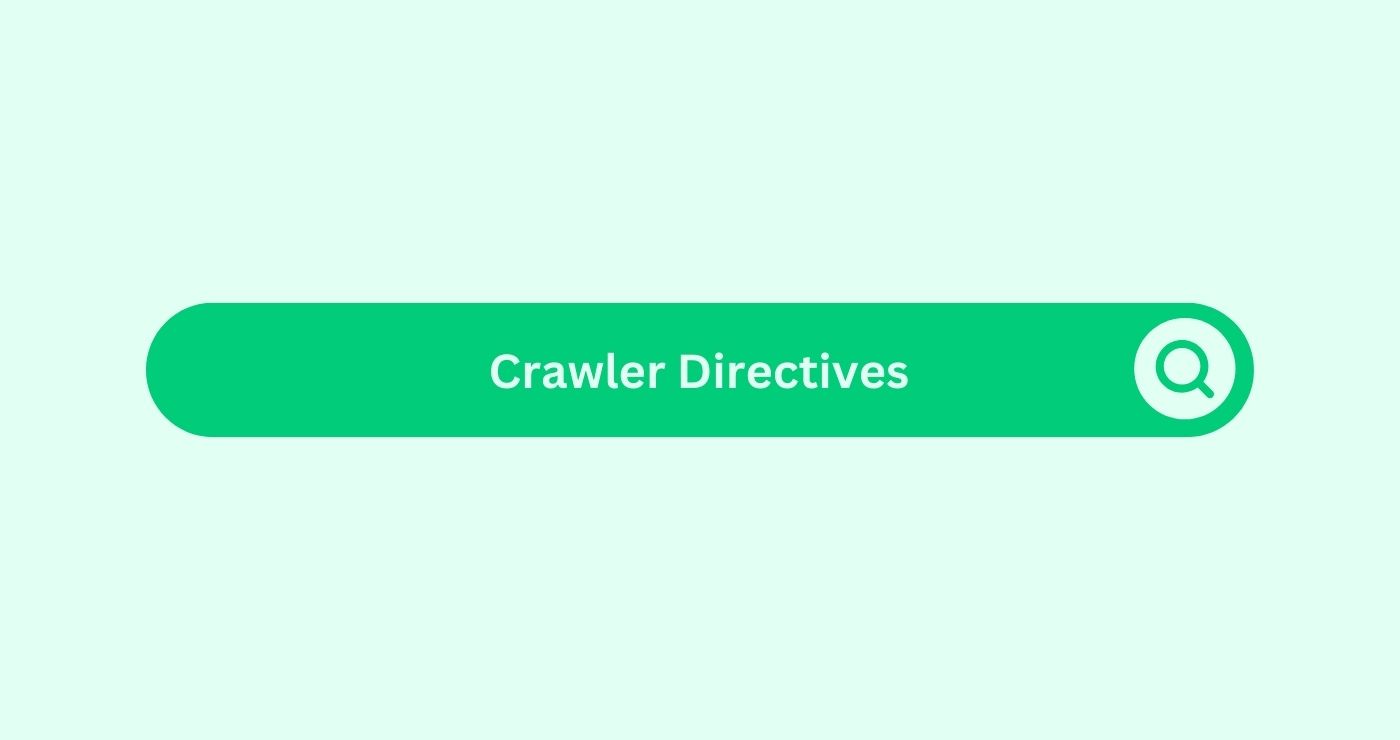Definition
Crawler directives, also known as robots directives or robots meta tagsWhat are Meta Tags? Meta tags are HTML elements that provide... More, are commands placed in the HTML code of web pages to instruct search engine crawlersDefinition Crawlers, also known as spiders or bots, are auto... More on how to crawl and index the content. These directives provide guidance to search engine botsDefinition Bots, short for robots, in the context of SEO, re... More regarding which pages to crawl, which links to follow, and how to handle specific elements on the page.
Example of How You Can Use Crawler Directives
For example, a website owner may use the “noindex” directive in the robots meta tag to instruct search engines not to index certain pages that contain duplicate contentDefinition Duplicate content in the SEO space refers to iden... More or are not relevant for search engine results. By implementing this directive, the website owner can prevent these pages from appearing in search engine results, preserving crawl budgetDefinition Crawl Budget refers to the number of URLs that a ... More and improving the overall quality of indexed content.
Key Takeaways
- Control Search Engine CrawlingWhat is crawling in the context of SEO? Crawling is the proc... More: Crawler directives allow website owners to control how search engine botsDefinition Bots, short for robots, in the context of SEO, re... More crawl and index their content, influencing search engine visibility.
- Prevent IndexingWhat is Indexing? Indexing in the context of SEO refers to t... More of Duplicate ContentDefinition Duplicate content in the SEO space refers to iden... More: Directives such as “noindex” can be used to prevent search engines from indexingWhat is Indexing? Indexing in the context of SEO refers to t... More duplicate or low-quality content, helping to maintain a high-quality index.
- Guide Search Engine BotsDefinition Bots, short for robots, in the context of SEO, re... More: By specifying directives in the robots meta tag or robots.txtDefinition Robots.txt is a text file located in the root dir... More file, website owners can guide search engine botsDefinition Bots, short for robots, in the context of SEO, re... More on which pages to crawl, which links to follow, and which areas to avoid.
- Optimize Crawl BudgetDefinition Crawl Budget refers to the number of URLs that a ... More: Properly implementing crawler directives can help optimize the crawl budgetDefinition Crawl Budget refers to the number of URLs that a ... More by prioritizing the crawlingWhat is crawling in the context of SEO? Crawling is the proc... More of important pages and avoiding the crawlingWhat is crawling in the context of SEO? Crawling is the proc... More of irrelevant or low-value content.
- Enhance SEO Strategy: Incorporating crawler directives into an SEO strategy can leadWhat is Lead? Definition A Lead in the context of SEO refers... More to improved search engine rankings, a a better user experience, and increased organic trafficDefinition In the context of SEO (Search Engine Optimisation... More to the website.
FAQs
What are Crawler Directives?
Crawler directives are commands placed in the HTML code of web pages to instruct search engine crawlersDefinition Crawlers, also known as spiders or bots, are auto... More on how to crawl and index the content.
What are some common Crawler Directives?
Common crawler directives include "noindex," "nofollow," "noarchive," and "disallow," which instruct search engine botsDefinition Bots, short for robots, in the context of SEO, re... More not to index certain pages, not to follow specific links, not to cacheCache Cache refers to a temporary storage mechanism used to ... More page content, and not to crawl specific directories, respectively.
How do Crawler Directives affect SEO?
Crawler directives can impact a website's SEO by controlling which pages are indexed by search engines, how link equityDefinition Link Equity, also known as link juice, refers to ... More is distributed, and how search engine botsDefinition Bots, short for robots, in the context of SEO, re... More interact with the site's content.
Where should I place Crawler Directives?
Crawler directives are typically placed in the section of HTML documents using the robots meta tag or in the robots.txtDefinition Robots.txt is a text file located in the root dir... More file located at the root of the website.
What is the difference between "noindex" and "nofollow" directives?
The "noindex" directive instructs search engines not to index a specific page, while the "nofollow" directive instructs search engines not to follow linksDefinition of Follow Links Follow Links, also known as "dofo... More on a page, preventing the flow of link equityDefinition Link Equity, also known as link juice, refers to ... More to linked pages.
Can Crawler Directives be used to hide content from search engines?
While some directives like "noindex" can prevent content from appearing in search engine results, intentionally hiding content from search engines using deceptive techniques may violate search engine guidelines and result in penalties.
Do Crawler Directives impact crawl budget?
Yes, crawler directives can influence crawl budgetDefinition Crawl Budget refers to the number of URLs that a ... More by directing search engine botsDefinition Bots, short for robots, in the context of SEO, re... More to prioritize crawlingWhat is crawling in the context of SEO? Crawling is the proc... More and indexingWhat is Indexing? Indexing in the context of SEO refers to t... More important pages while ignoring or avoiding low-value or irrelevant content.
Can I use Crawler Directives to block specific parts of a page from being indexed?
Yes, by using HTML elements such as tags or robots.txtDefinition Robots.txt is a text file located in the root dir... More directives, website owners can block specific parts of a page, such as header, footer, or sidebar, from being indexed by search engines.
Do search engines always follow Crawler Directives?
Search engines generally respect crawler directives, but it's essential to periodically monitor crawl behavior and ensure that directives are implemented correctly to achieve the desired results.




